When sharing my love for Math Workshop over the past several years, I’ve answered more questions than I can count from thoughtful elementary teachers who are excited to implement this framework in their classroom.
I’m taking time this month to share a collection of the most commonly-asked questions I receive. Some of these questions might be your own…whether you’ve had the time to send them in or they’ve been lingering in the back of your mind. I hope this series of posts will serve as an easy reference for you as you implement Math Workshop in your classroom.
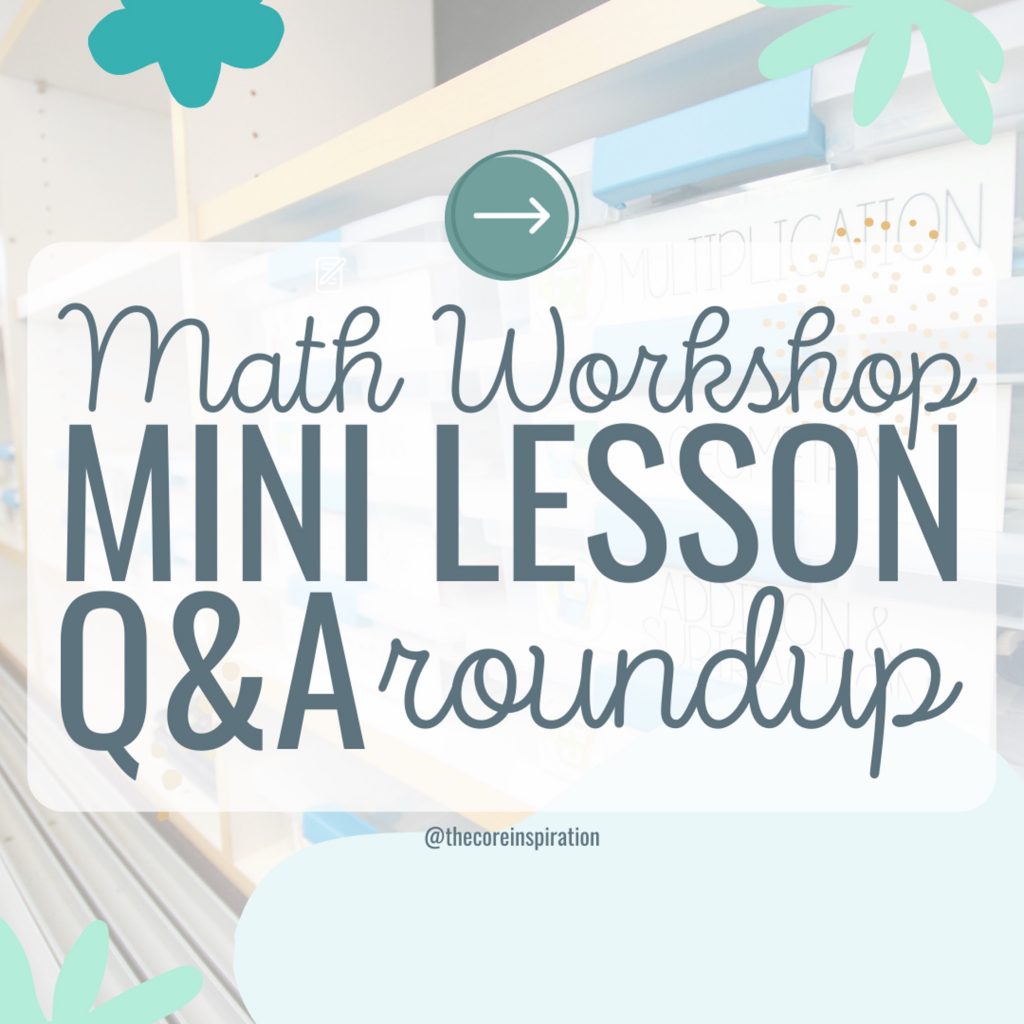
Each week, the questions will be focused on a different portion of Math Workshop:
- Mini Lessons (Week 1)
- Meet With the Teacher Rotation (Week 2)
- At Your Seat & Technology Rotations (Week 3)
- Hands-On Games Rotation (Week 4)
If you prefer to see all the questions in one place, or you want a printable version where you can add your notes, I’ll send you a PDF with the full collection. Simply click here to let me know you’re interested.
Part 1: Mini Lesson Questions
How do you make your mini lessons last only ten minutes?
Keep in mind, the mini lesson is not the time when you are trying to teach all students to mastery level or even to independent work level. It is simply an opportunity to introduce students to the concept of the day through modeling, expose them to the vocabulary they’ll be using to practice math that day, and collect formative assessment data that guides your small group instruction during M.A.T.H. rotations.
Here’s how I format my lessons to make that possible.
Before school, I create a few slides for my lesson that day. One slide to introduce the topic for the day. Between 4-6 slides that include complex math problems that hit all the skills students will be required to practice that day.
- At the top of each slide are the instructions for solving the problem.
- In the middle of each slide is the math problem with plenty of blank space around it where I can draw a model on the whiteboard to demonstrate how to show work for the math problem.
- At the bottom is a bank of math vocabulary words that can be used to scaffold the labeling of any math models created.
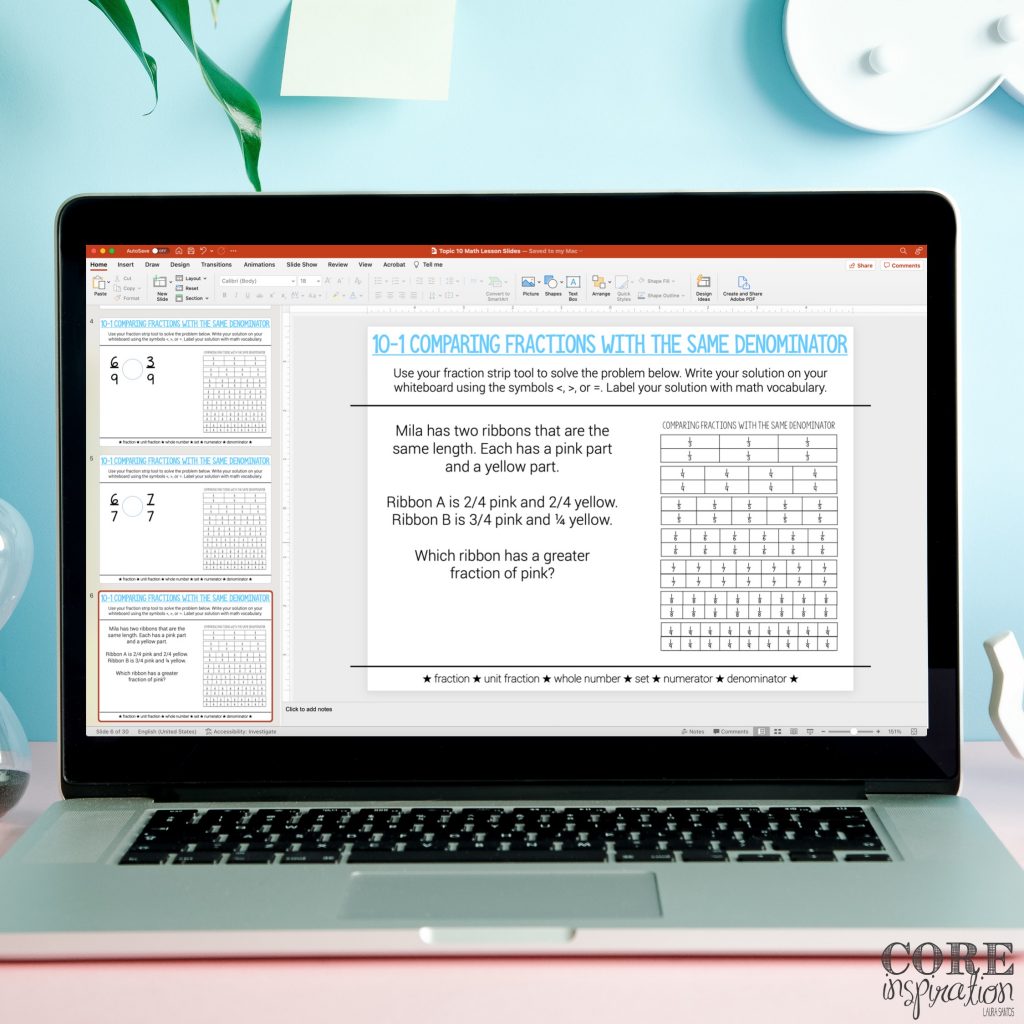
I invite all my students to the mini lesson carpet at the front of the room. They bring their personal whiteboard and whiteboard marker (and any reusable modeling tools I’ve provided them for the unit – like fraction strips or number lines as needed).
I use the first couple of slides to model how to solve these problems while students observe. The last couple slides are used to provide them with practice.
I set a timer for 9 minutes and place it laying flat on my table so it’s tracking time and will beep when I have been teaching for nine minutes. I tell students what this timer is for – it lets me (and them) know when there’s only a minute left until the mini lesson ends. Keeping it out of sight makes it less distracting for students who may have the tendency to stare at the timer as it counts down.
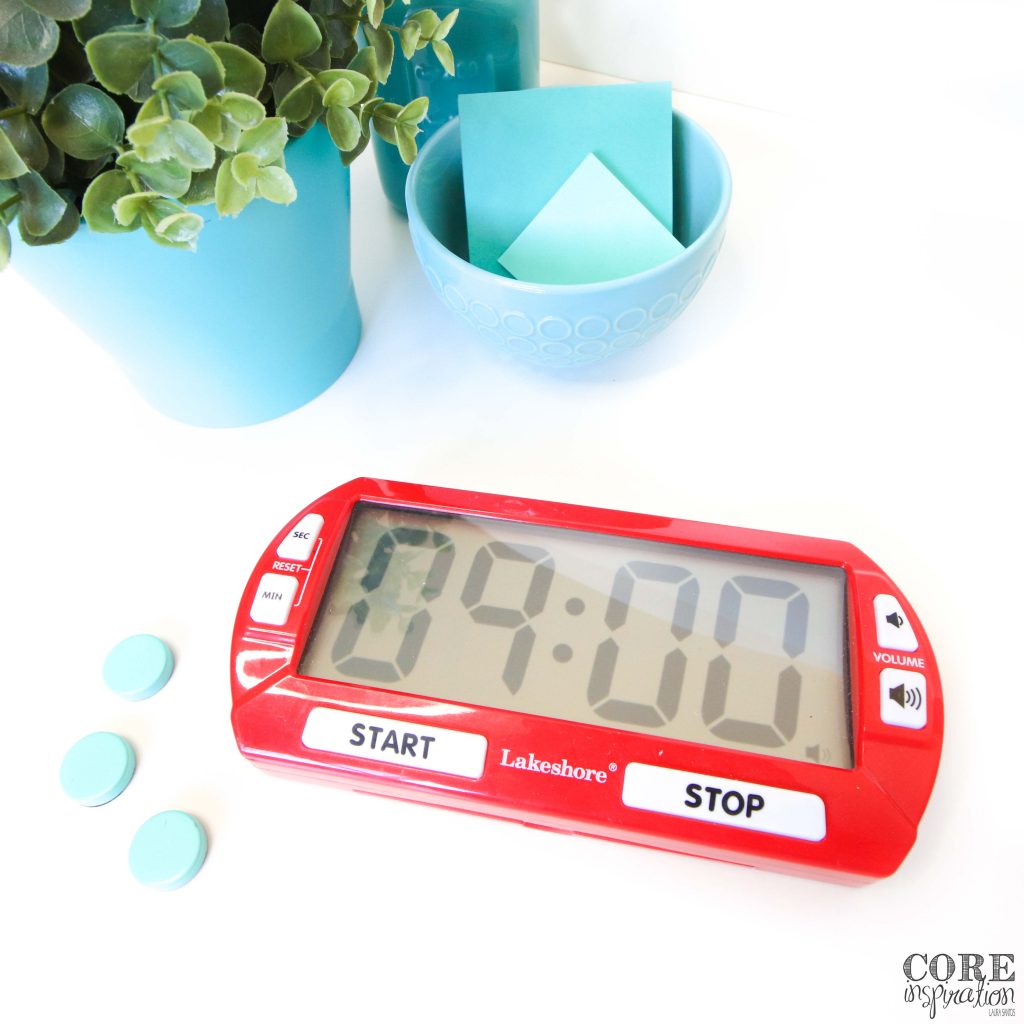
Once the timer is set, I begin using the slides I’ve created to teach the lesson. I model using the first 1-2 slides, then give students the opportunity to practice using all the slides after that. As they complete each practice problem, I walk around the carpet area to observe the work they’re doing on their whiteboards and provide one-on-one support as needed. I also jot quick notes that will help me tailor my small group instruction to student needs once the M.A.T.H. rotations begin. I’ll provide more information on that below.
They are expected to do the following as they work on each practice problem:
- Solve the problem using a math model
- Label their math model using as much math vocabulary as possible(found at the bottom of the lesson slide).
- Circle their solution so it’s easy to see on their board.
- Carefully hold their board close to their chest when they are done solving to signal that they’re ready to share their answer with me.
When I see most students are done solving, I count down, “Three, two, one, show!” and they all hold their whiteboard in the air to show their solution.
I take a quick moment to jot down notes on anything I may have missed while walking the room, and move on to the next practice problem.
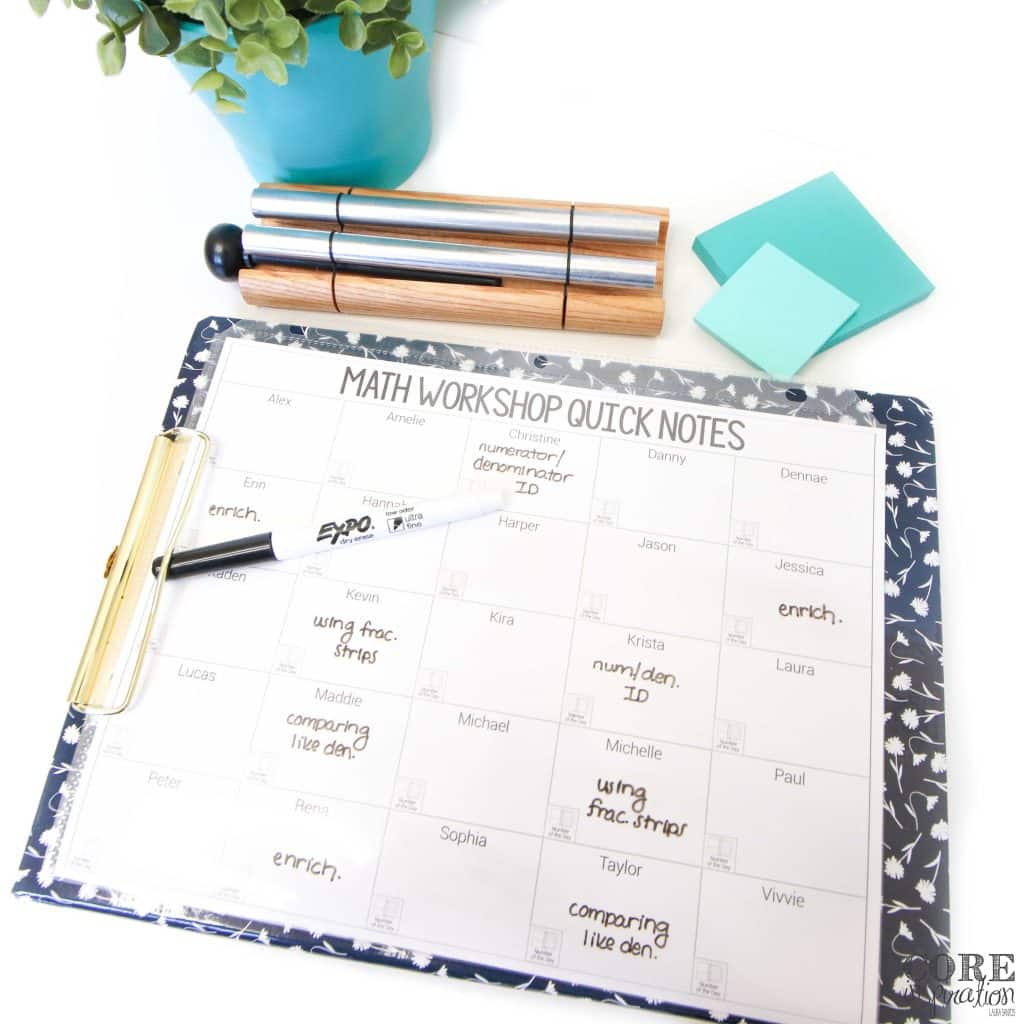
This continues until all mini lesson practice problems are complete, or until ten minutes have passed. By this time, I have now had ten minutes to collect information that will guide the small group work I’ll be doing for the next forty minutes of workshop during M.A.T.H. rotations. The rotations are when I target each student with content that helps them achieve mastery for each standard (or provide enrichment for those who have reached mastery level).
Do you track any data during your mini lessons? If so, what do you use?
Yes, I do track data during mini lessons, but it is VERY informal and is only used to guide my plan for the M.A.T.H. rotation portion of math workshop.
I have a laminated grid that includes each student’s name in a square. During the mini lesson as I walk around to observe and provide one-on-one support while students are solving the math problems, I jot notes on any misunderstandings I notice or any impressive work I notice.
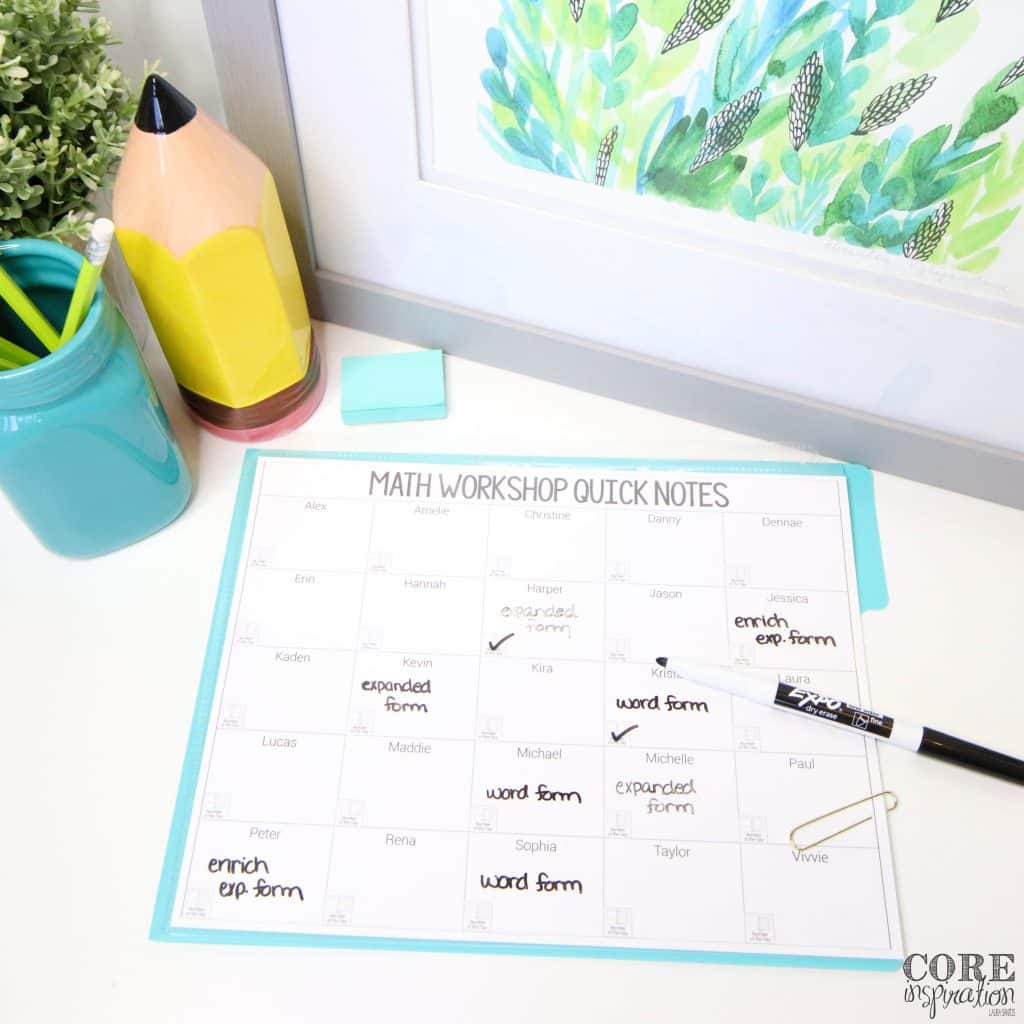
Pic: Teacher’s formative assessment notes sheet to jot quick notes during math workshop mini lessons to direct small group instructional decisions. (FROM ARCHIVE)
These notes help determine who I will call back for small groups and who I will follow up with for one-on-one check-ins during the M.A.T.H. rotations.
Where do you find the content for your mini lessons?
I teach the content from our district-adopted curriculum. Any curriculum I’ve used has far more content than can possibly be covered in a mini lesson so I recommend looking at the standard for the lesson you plan to teach, then select a handful of problems that help students practice that standard in different ways.
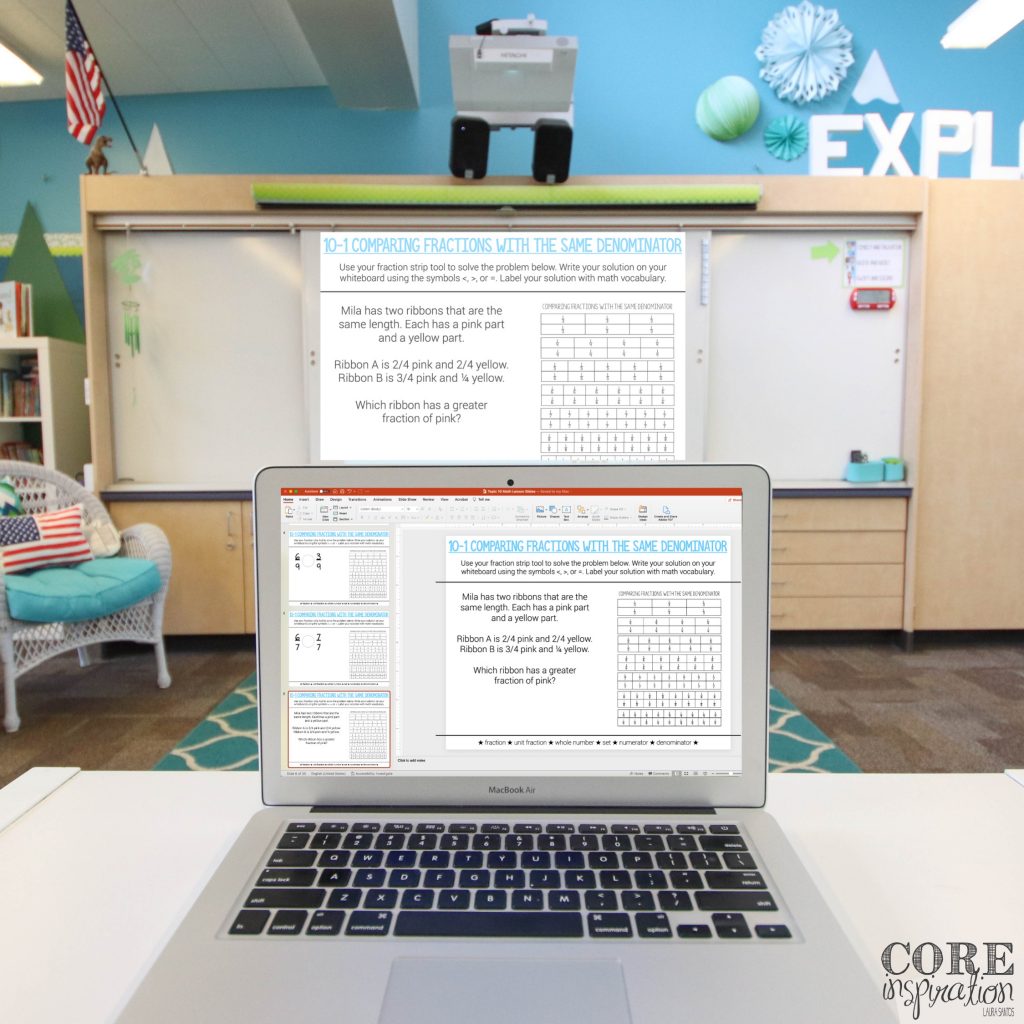
Q: How many problems are students doing independently during a mini lesson?
3-4 problems
Q: Is mini lesson work done in a notebook vs a whiteboard? Have you tried both?
I have tried both and have preferred whiteboard for years. Here’s why:
- Students LOVE whiteboards and their engagement and efficiency improved when I switched away from paper and pencil work during lessons.
- In my experience, students who need extra support show higher confidence when using a whiteboard – there’s something special about a surface that is so easy to erase and start fresh!
- Students and I weren’t referring back to work from previous lessons so it seemed pointless to keep it all in a notebook.
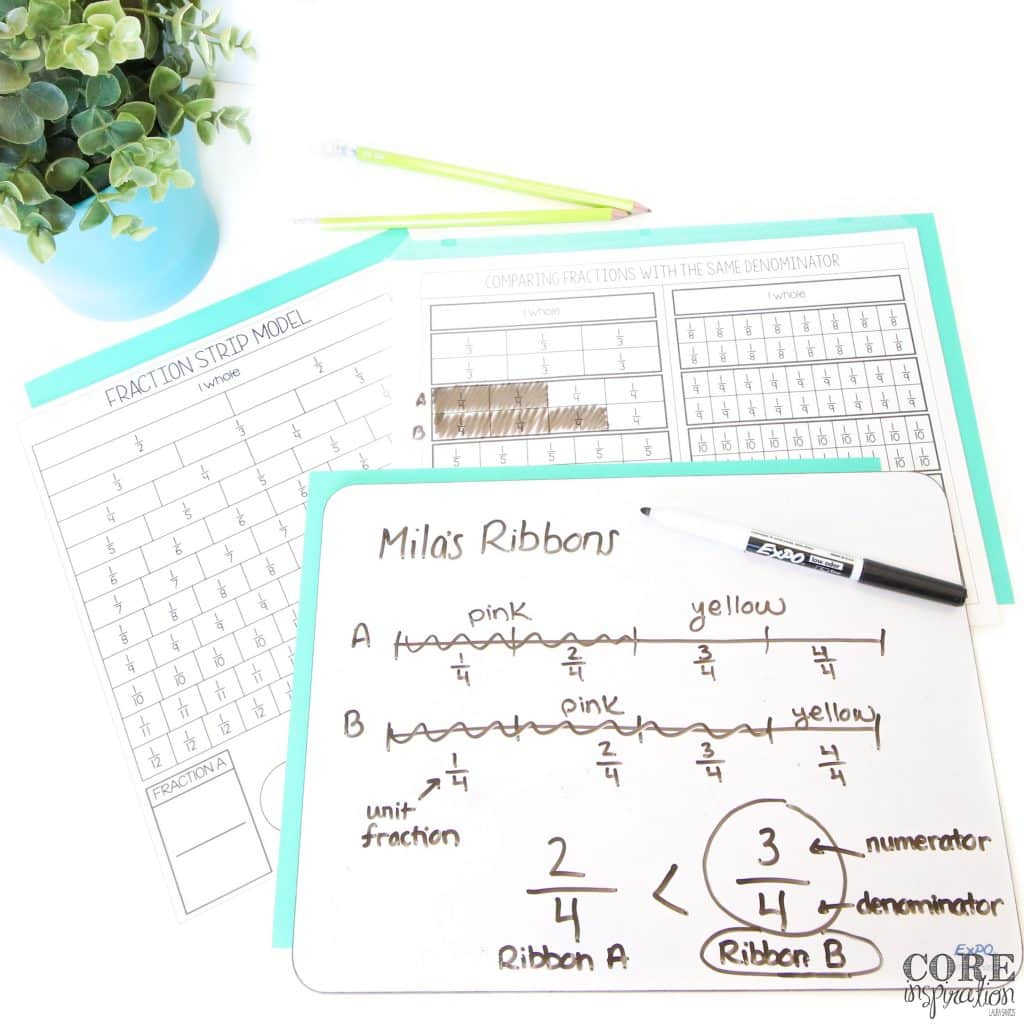
Q: Do students get materials that correspond to your in lesson slides at all?
They don’t get any lesson printouts. They do get printable manipulatives that are stored in sheet protectors (keeping with the erasable/reusable whiteboard tools). For example, during place value, they get number lines, and during fractions, they get fraction strips, etc.
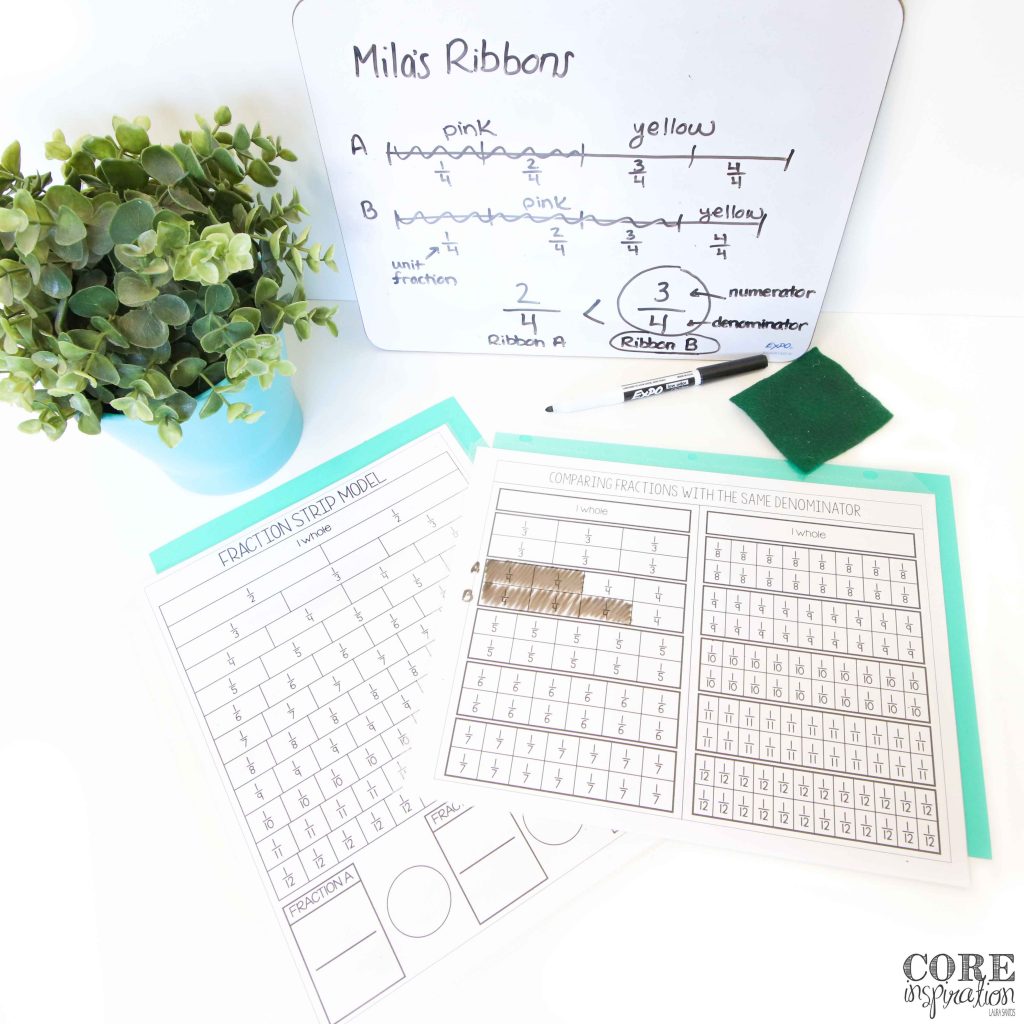
Q: Are there days when your mini lesson takes longer? First day of a unit, etc? What happens to groups/rotations on these days?
Occasionally, yes. Never so long that rotations aren’t possible. If a concept requires a great deal of time to introduce, it should be broken apart into smaller digestible parts over multiple days.
Q: When/how do you introduce vocabulary for each unit?
I introduce it during the mini lessons while modeling how to solve problems. Using vocabulary to label math models has been the easiest approach I’ve used over the years. My approach for this is to provide vocabulary at the bottom of each lesson slide, demonstrate how to use it for labeling math models created during the mini lesson, and require that students use it to label their own models as they solve each problem during the lesson.
Q: Do you explicitly teach, or just go through the problems together? Are all units taught the same?
I explicitly teach and have students demonstrate understanding of what’s been taught before they head off for rotations.
Not all units are taught the same – some units lend themself more to explicit direct instruction, others to productive struggle, and others to project based learning, collaborative learning & simulations.
Regardless of the instructional approach, I find Math Workshop to be the best structure to differentiate with.
Q: How long do you wait until you launch workshop and what do you do at the beginning of the year before you launch workshop?
I launch workshop on the second Monday of the school year. During the first week, we provide students with an entry assessment to help make groups for the first few units. The whole first week of school I spend most of each day introducing routines and expectations and building community. We typically have three days of school the first week.
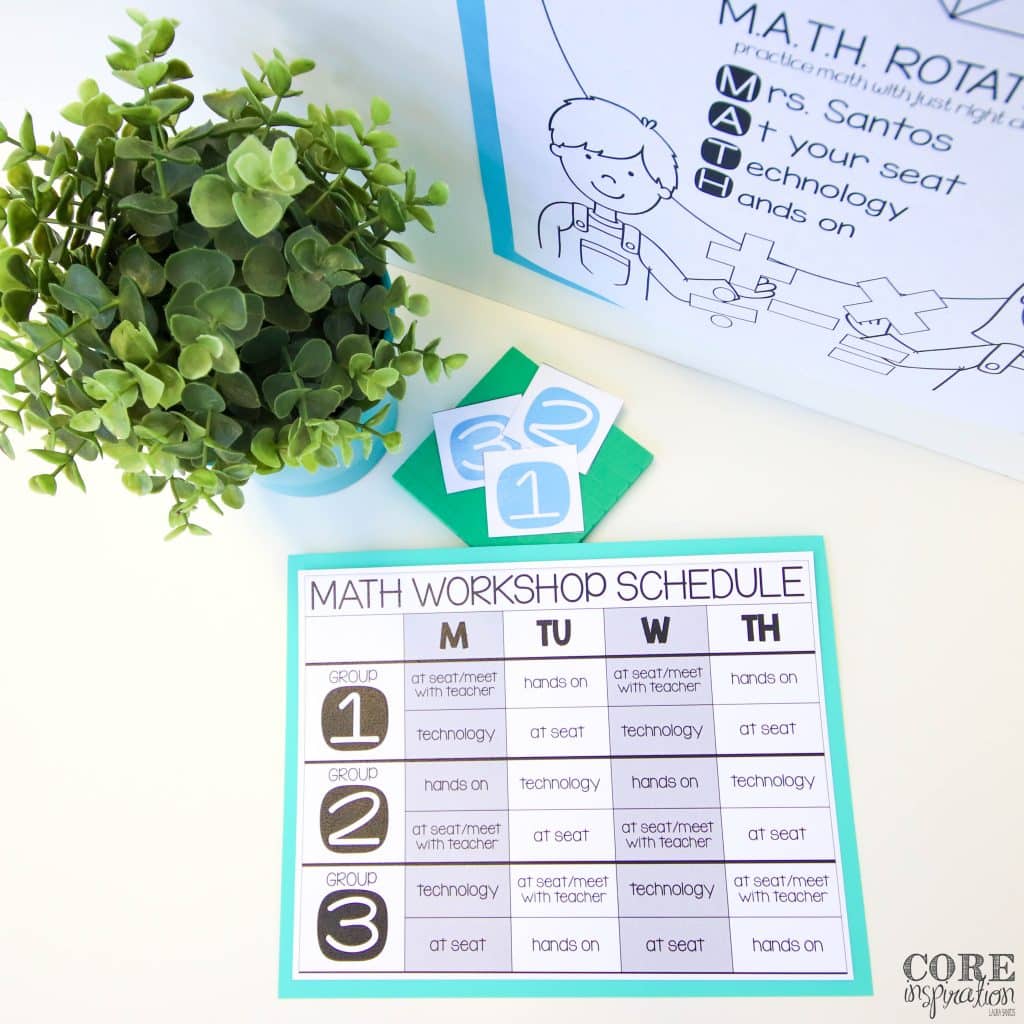
Wrap Up
There you have it! All these questions about mini lessons are from motivated teachers like you who are working hard to implement a Math Workshop framework that makes math differentiation more manageable. Next week, I’ll be sharing answers to questions about the Meet with the Teacher rotation of Math Workshop.
If you’re anything like me, reading a list of questions always sparks a few new questions, so feel free to drop those in the comments below. 🙂
Interested in the resources featured in this blog post for your own classroom? Click the links below to hop over to my store.


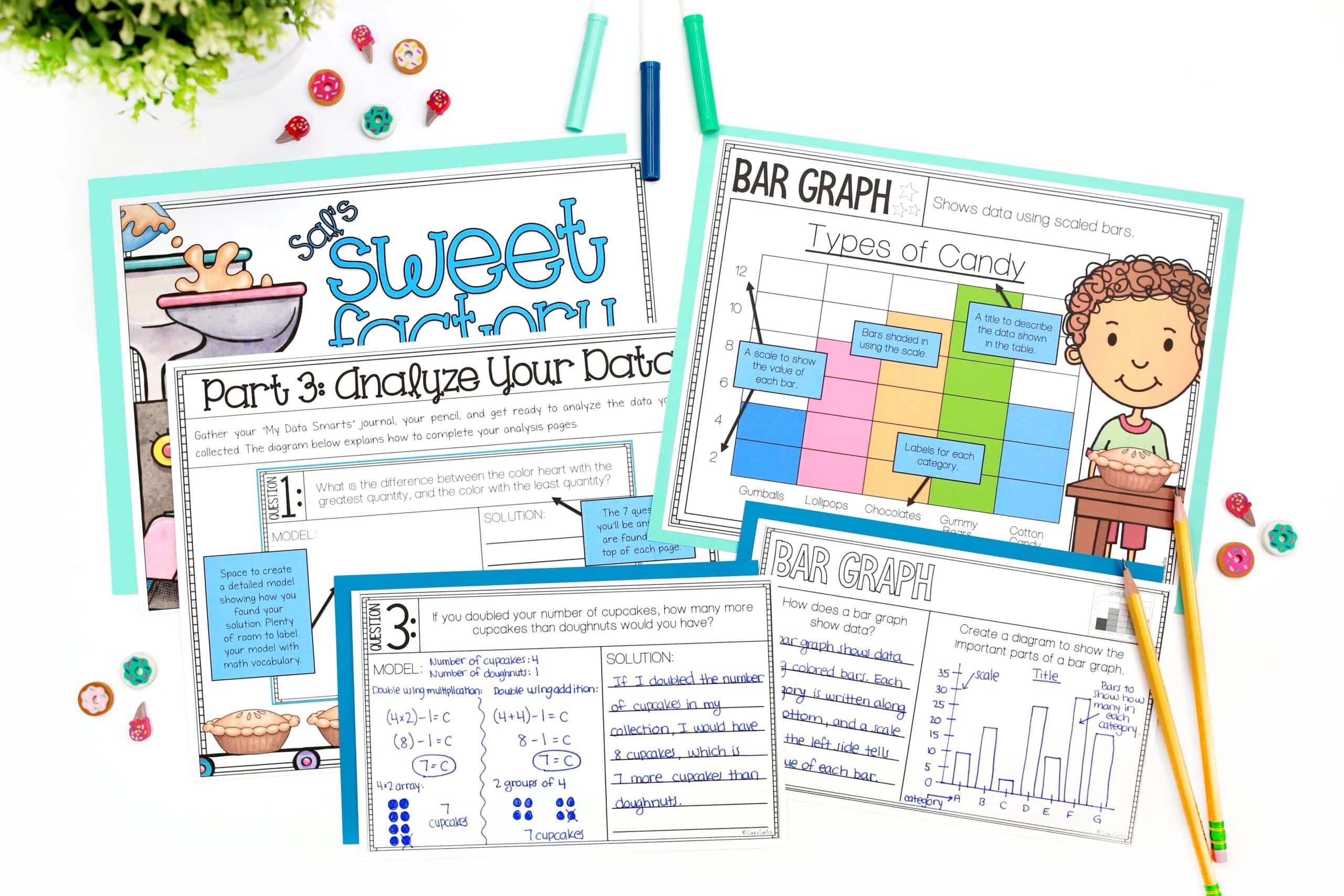
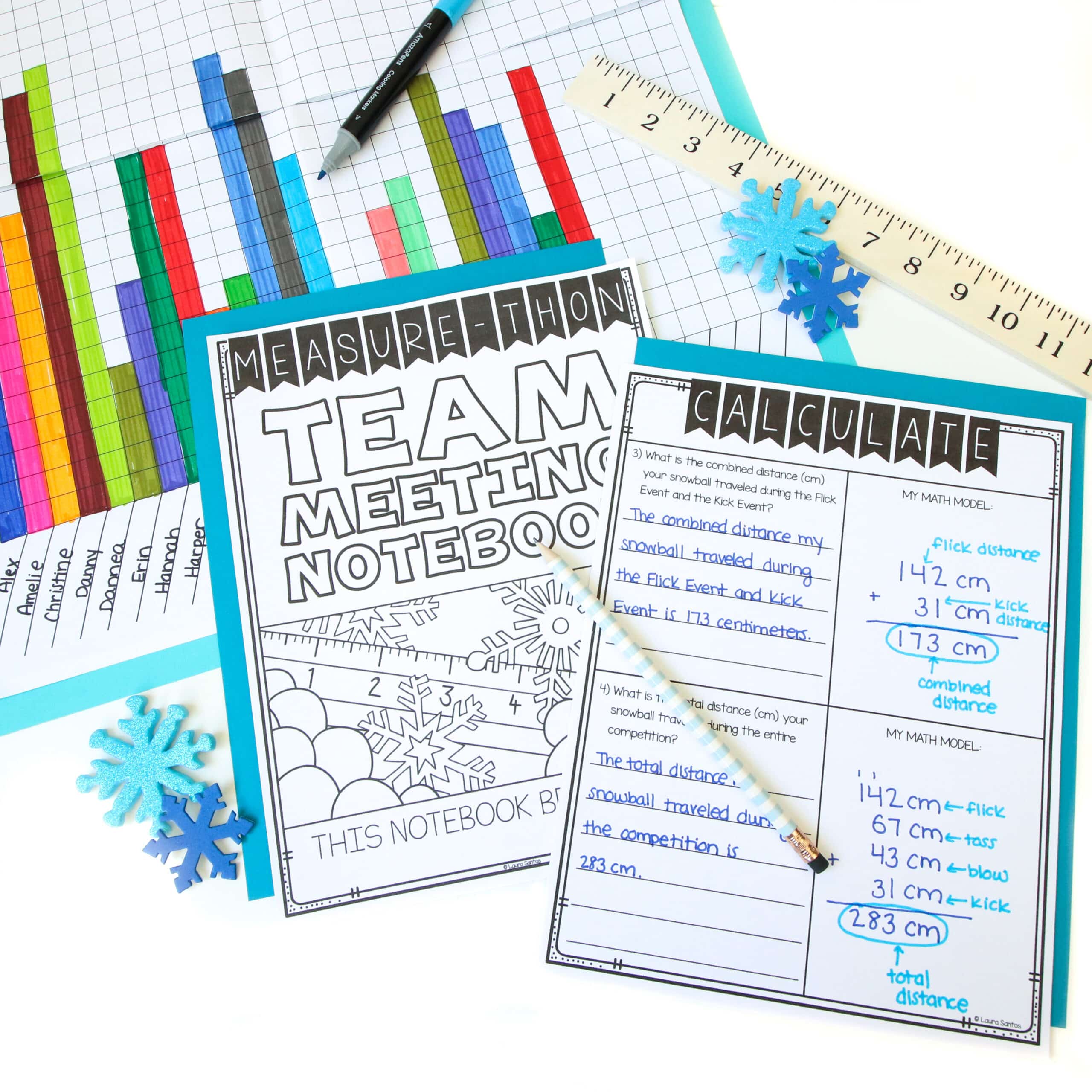

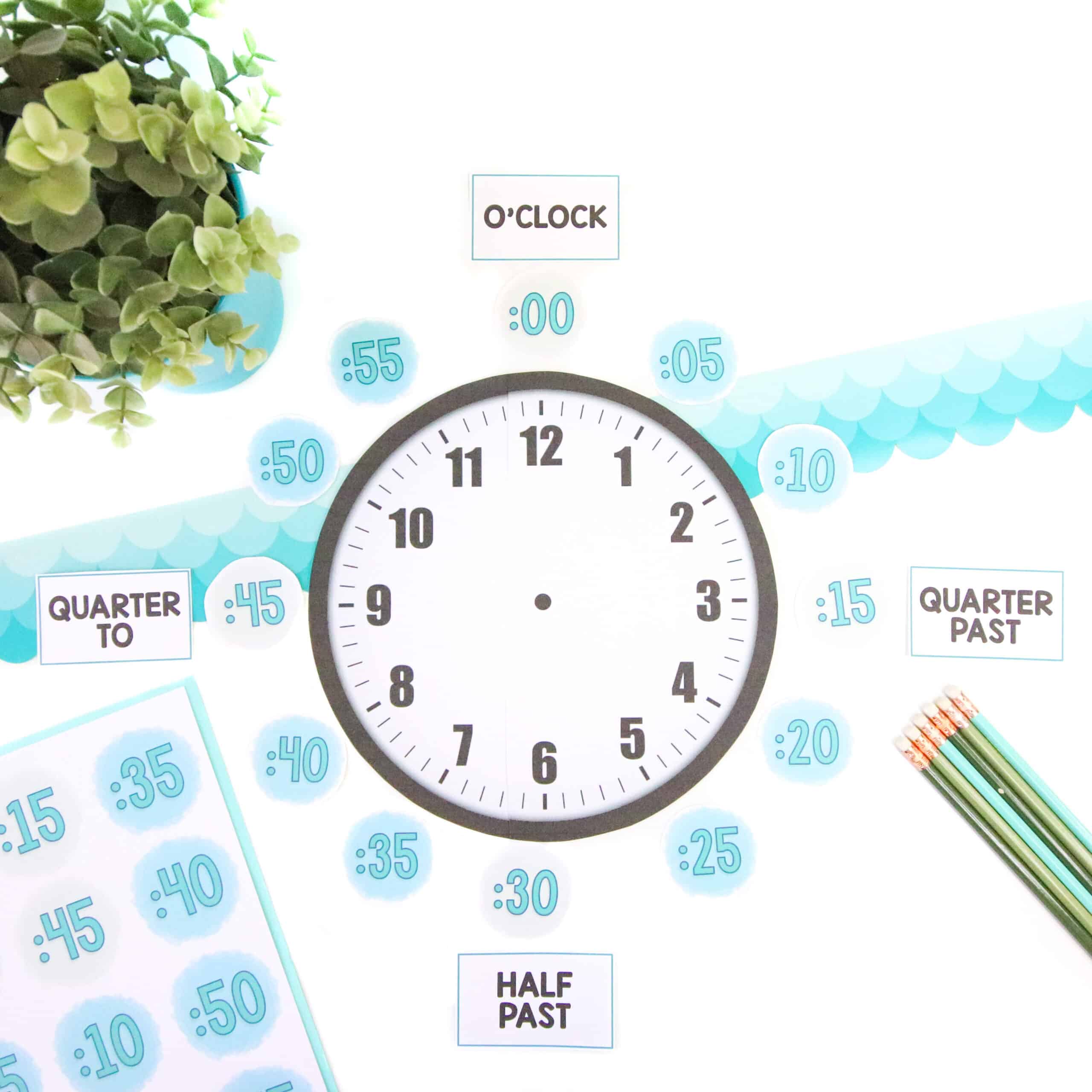
6 Responses
Hi Laura! This is so great. Thanks for all of your detailed work. One more question – for the practice problems, do you go over each solution or do you simply collect the information from each individual whiteboard response and move on to the next problem? For the first model problems, do the children sit and watch or are they expected to solve alongside you on their boards?
Thank you Kate! For the first modeling problems students sit and watch me solve them so they can tune into the think alouds I’m sharing. For the rest of the practice problems, I incorporate a mix of sharing out solutions and simply collecting data and moving on – this is all dependent on the level of understanding I’m seeing for the class as a whole and the amount of time we have remaining in the mini lesson.
I love how you break up a mini lesson into smaller pieces. I really like my schools curriculum but some lessons can be so long. I just switched grade levels so I’m hoping by slowly adapting and implementing these ideas I’ll be able to fully make the change next year. Thanks for always sharing.
Thank you for the kind message Caitlyn! I hope these ideas will be helpful as you give the routine a try next year. 🙂
Thank you so much for sharing your process for M.A.T.H. Rotations! I really appreciate the specifics. At our school, we also have the Envision Curriculum, and I was wondering if you sell your mini-lesson slide decks on Teacher-Pay-Teachers, or on your own website. Those would be golden. Best wishes as you prepare for your upcoming school year!
Hi Martha, thank you so much for the kind message. I don’t sell the mini-lesson slides anywhere in order to avoid copyright infringement. 🙂